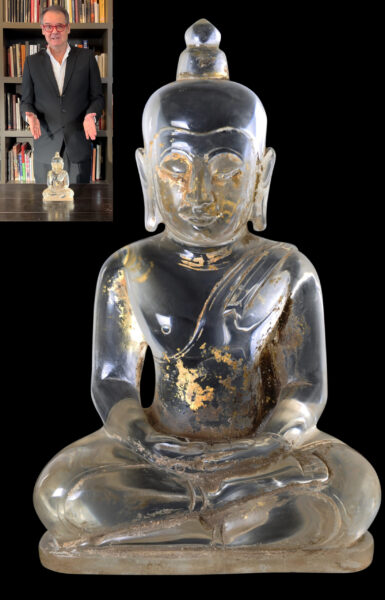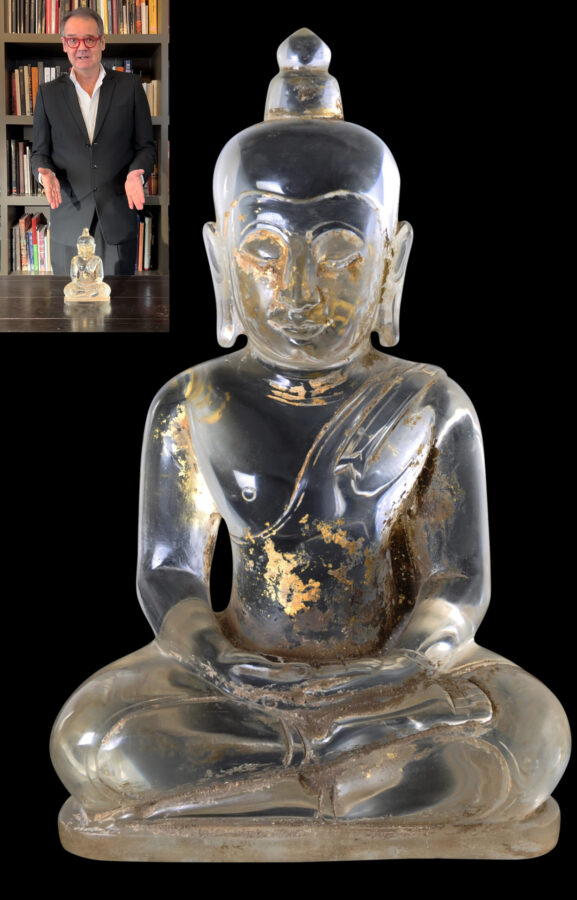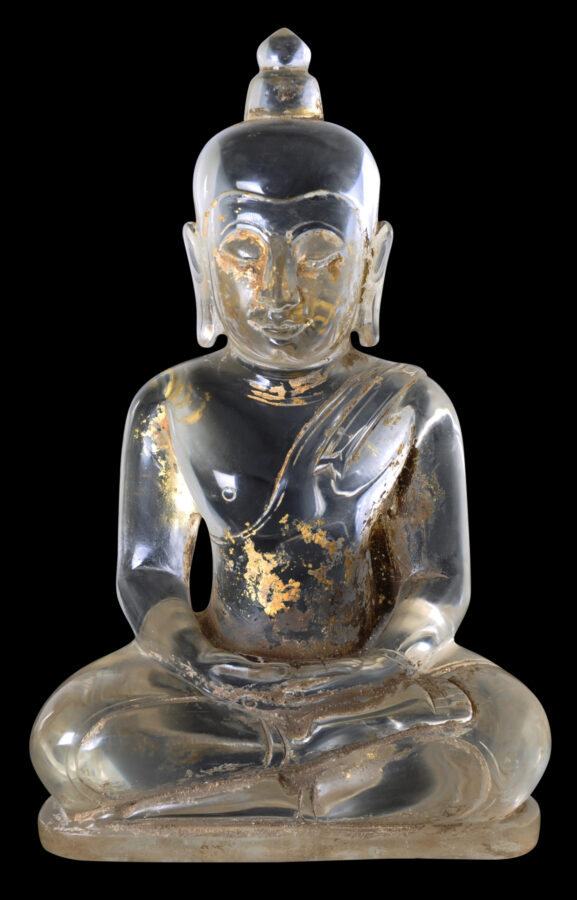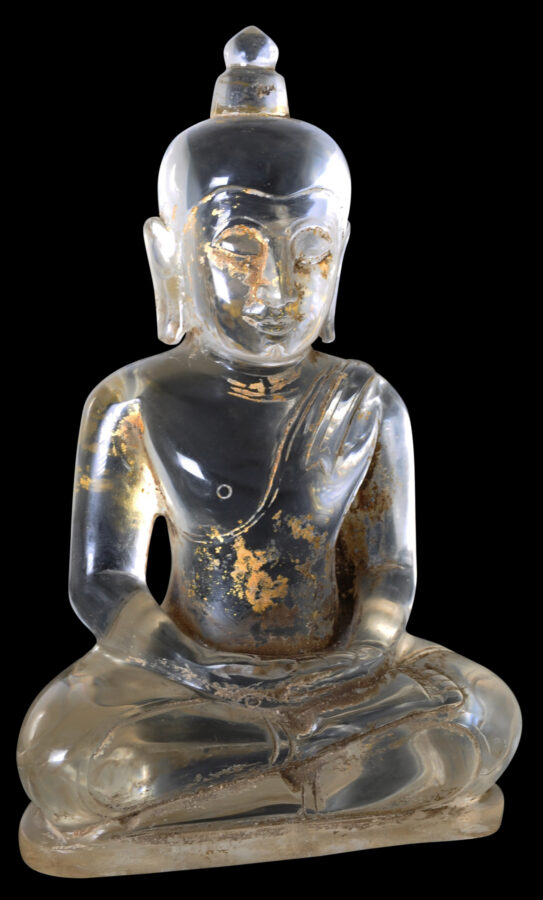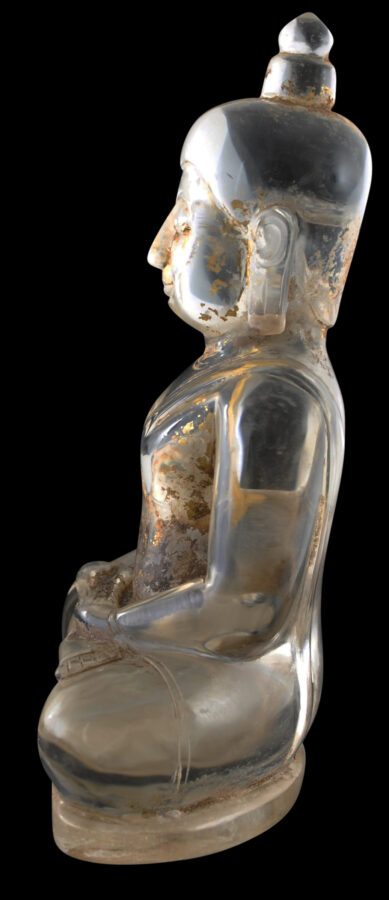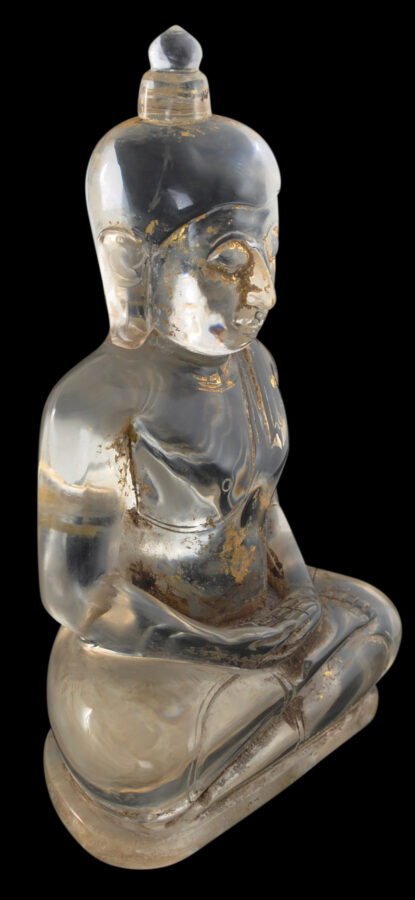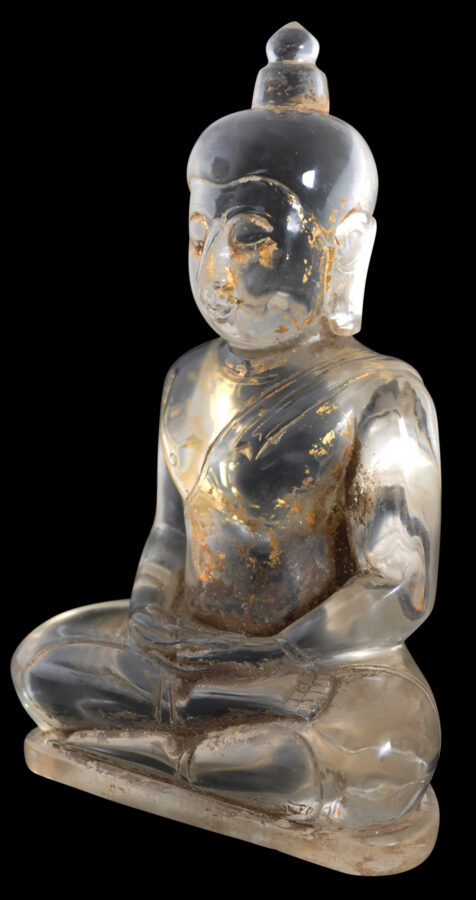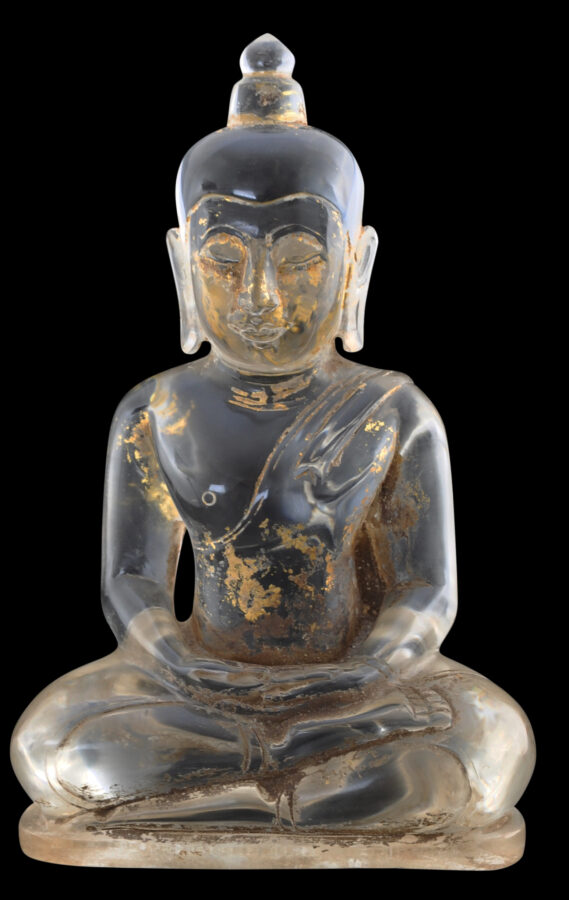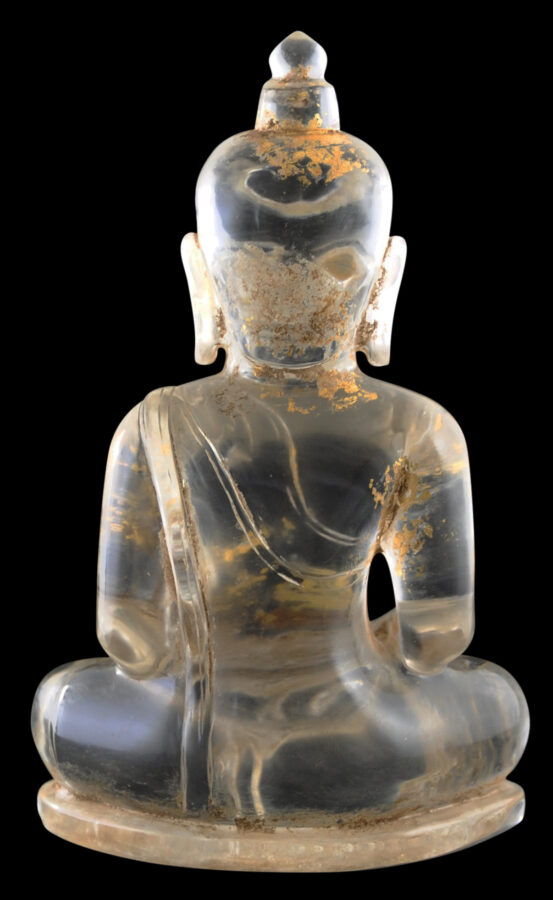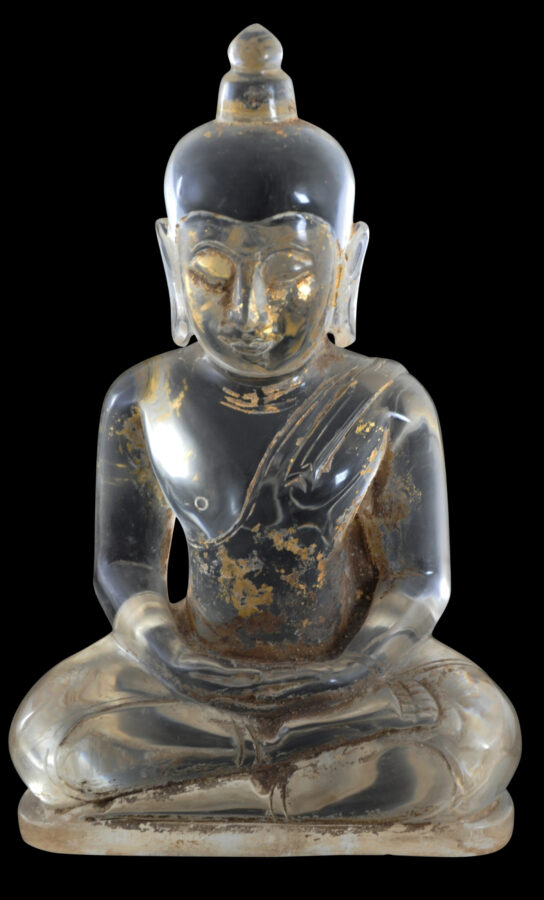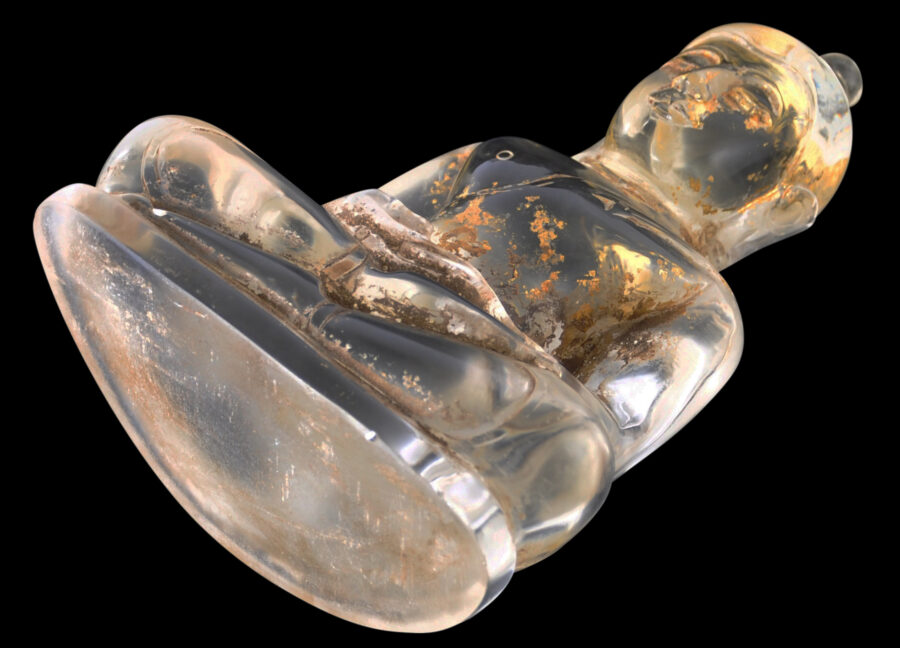This large image of the Buddha, which dates to 17th-18th century Burma or earlier, has been carved from a single, flawless block of rock crystal. It is the largest flawless rock crystal Buddha of which we are aware. The act of carving the Buddha from such a precious and hard material would have been an act of devotional merit on the part of the carver and the commissioner. Gold leaf was subsequently applied to the image using a natural glue as an adherent as a further act of merit. Much of this gold leaf has now worn away.
The choice of rock crystal through which light can shine has allegories to knowledge and insight. The use of flawless crystal similarly suggests the flawlessness of the Buddha’s teachings. The use of rock crystal may also be a further allusion to a rock crystal ladder that the Buddha used to descend from heaven (see below.)
The image shows the Buddha seated in dhyanasana with both hands crossed on the lap in dhyana mudra. The face is downcast and the nose is prominent. There is a prominent cranial protuberance or usnisa on top of the head.
The Buddha wears a robe with his right shoulder bare and a robe sash falling from the left shoulder. The toes and fingers are well delineated.
Rock crystal was used in nearby Thailand too. According to Stratton (2004, p. 83, 225), ‘while bronze, terracotta and stucco were most commonly employed for northern [Thai] Buddha images, other materials were utilised including precious ones such as crystal, jadeite, silver gold,, etc…Crystal was more precious than gold or silver. Indeed it was upon a crystal ladder that the Buddha descended from the Tavatimsa heaven [one of six heavens in Buddhist cosmology].’ This latter aspect relates to the story in Thailand and Burma about the death of Maya, the Buddha’s mother, seven days after the Buddha-to-be was born. Maya had no access to the Buddha’s teachings, so the Buddha went up to Tavatimsa heaven, where Maya had been reborn, so that she would have the benefit of hearing his teachings (the Dharma). Upon his return to earth, the Buddha descended upon a ladder of crystal accompanied by two Hindu gods who acted as his witnesses and acolytes. One was Brahma, who descended on a ladder of gold. The other was Indra who descended on a ladder of silver.
See Lot 74, Sotheby’s London, ‘Khmer, Thai, Indian and Himalayan Works of Art’, June 15, 1987, for a larger, but less-well carved example in which the rock crystal is not flawless but heavily included and flawed. (For information, the Sotheby’s example carried an estimate of £10,000-£15,000 – and that was back in 1987.)
The example here is in superb condition. It has clear age, and is quite simply, remarkable.
References
Fraser-Lu, S., Burmese Crafts: Past and Present, Oxford University Press, 1994.
Stratton, C., Buddhist Sculpture of Northern Thailand, Silkworm Books, 2004.


